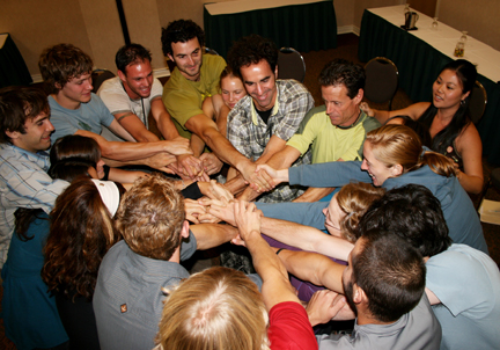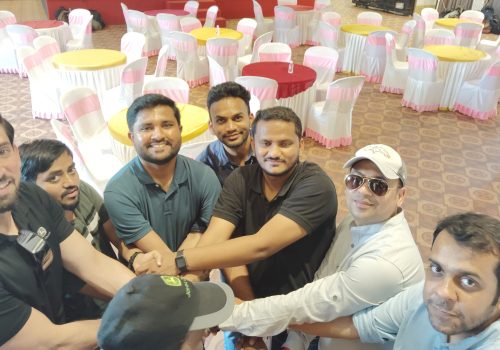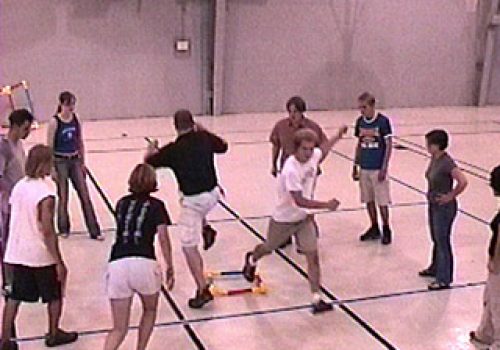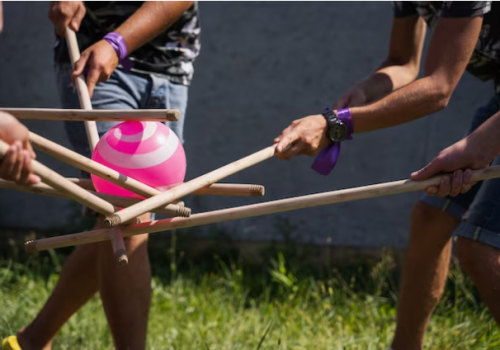Team Alignment
Teamwork, although comes to all humans naturally, and yet a lot of people find it difficult to be a team member. Team involvement requires continual effort and intent to be a team sport!
The challenge for the team leaders is to unite everyone for the same goal and accommodate different values together.
Constructing a team is an undertaking that needs patience, time, and effort. It is a supervised chemical reaction that requires an optimal amount of each of the mentioned components. Although to bring a catalyst for this process, a session of Lego serious play facilitated by supervisors acts as a fast track for building team engagement in the most non-intrusive ways.
We don’t take you outdoors to rafting or mountain climbing, rather adopt the skillset and strategies of both activities combined to help you build a team that guides, adapts, and performs effectively without leaning back. Our approach essentially focuses on the issues at hand. Our real team reaches to untangle disagreements, unlearn old habits of team members, bring clarity to individual roles, and merge diverging points of view through our Lego Serious Play method.
It is often difficult for the team to focus on the larger picture or foresee the upcoming challenges within the teamwork. We move with your team towards achieving an enduring operative technique that will not only help with the issues at hand but also be fruitful in future endeavors. The team will have accomplished managing acute task objectives and also be prudent in strategic planning and not go astray.
The role of a leader in any organization is multi-faceted and plays a significant part in team alignment.
- Setting Clear Goals and Expectations: Leaders define the team’s objectives, set expectations for performance, and communicate the vision and mission of the organization.
- Providing Guidance: Leaders guide team members by offering direction, support, and advice to help them achieve their goals effectively.
- Fostering Communication: Effective leaders facilitate open communication within the team, ensuring that information flows freely and that all team members are heard.
- Promoting Collaboration: Leaders encourage collaboration among team members, fostering an environment where diverse perspectives are valued and integrated.
- Resolving Conflicts: Conflicts are inevitable in any team. Leaders play a crucial role in resolving conflicts and maintaining a harmonious work atmosphere.
- Leading by Example: A leader’s behavior sets the tone for the team. Leading by example, with integrity and dedication, motivates team members to follow suit.
- Providing Feedback: Constructive feedback from leaders helps team members improve their performance and grow professionally.
- Empowering Team Members: Leaders empower team members by delegating responsibilities and giving them the autonomy to make decisions within their areas of expertise.
- Adapting to Change: Leaders guide their teams through periods of change and uncertainty, helping them adapt to new circumstances.
The effectiveness of these activities relies on thoughtful planning, clear objectives, and skilled facilitation to ensure the desired outcomes of team alignment and improved collaboration are achieved.
Team Alignment
- 10-100
- Low
- Hybrid
- 150-180 min
- Resolving Conflicts
- Providing Guidance
- Promoting Collaboration
- Fostering Communication

Similar Activities
- GROWING BETTER EVERY MINUTE
Get your Business
Right up There
Identifying the missing pieces in the organization or the fading magic of it or perhaps just a lack of acceptance of the same; one of these is enough to get any organization into the act. As it is been rightly said “Acceptance first step towards transformation.” You cannot change if you don’t know where to start and those around you!







